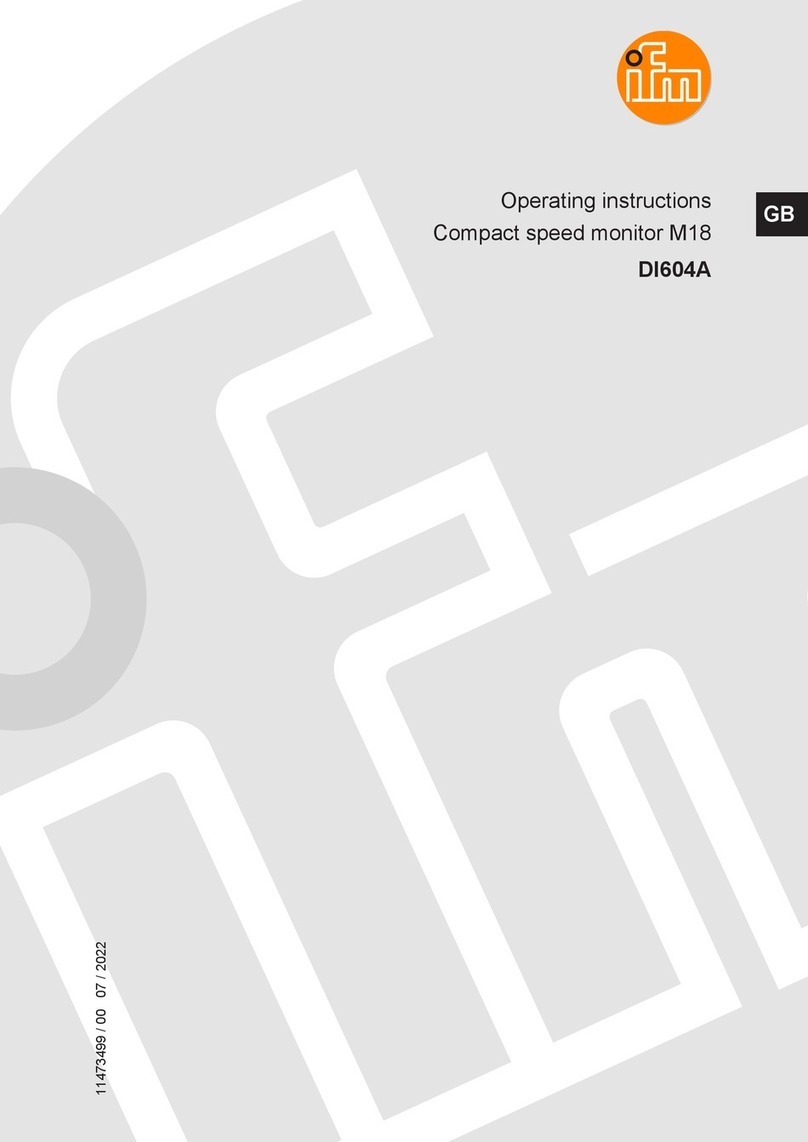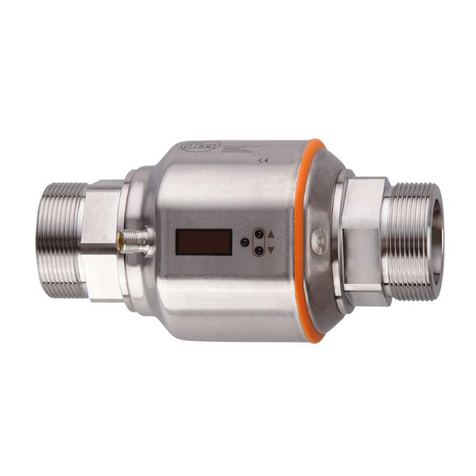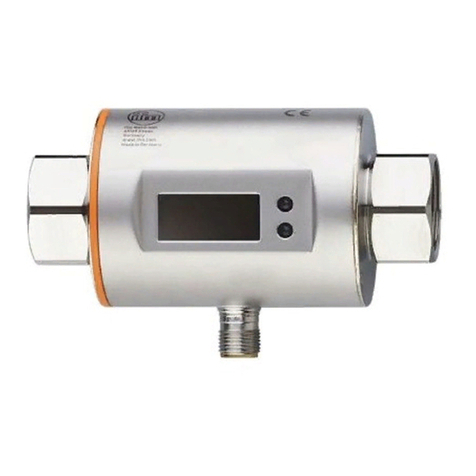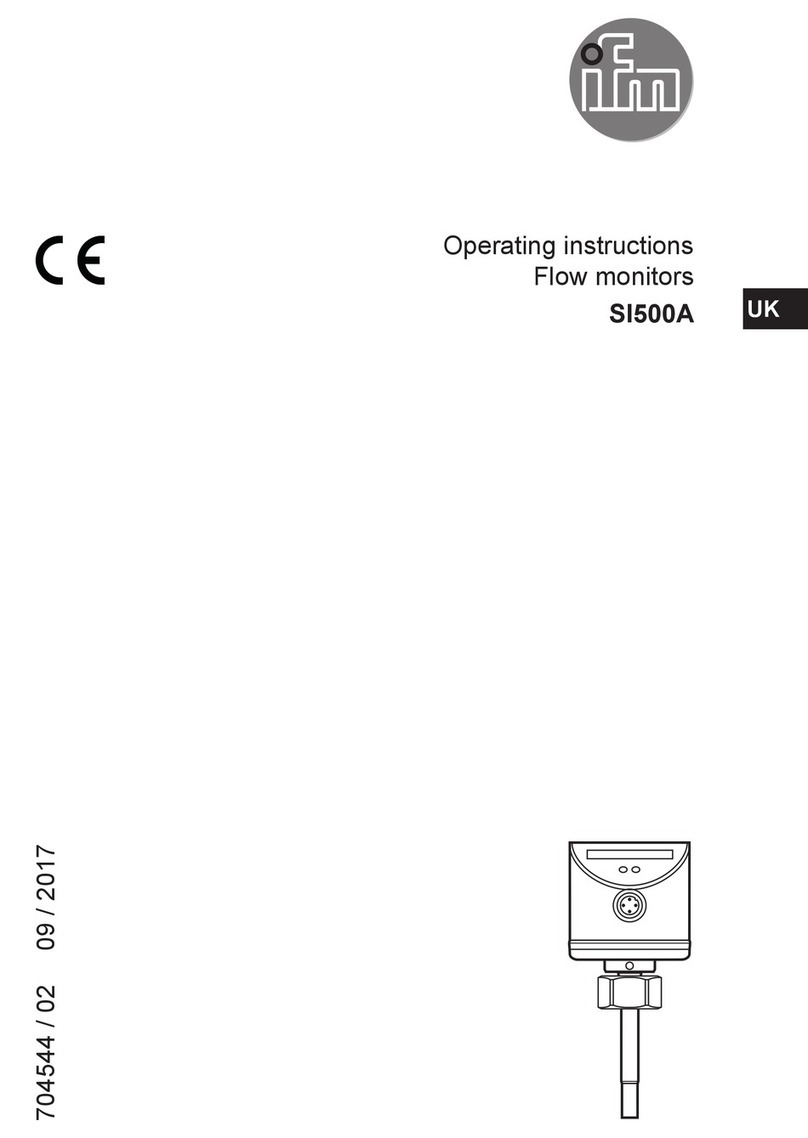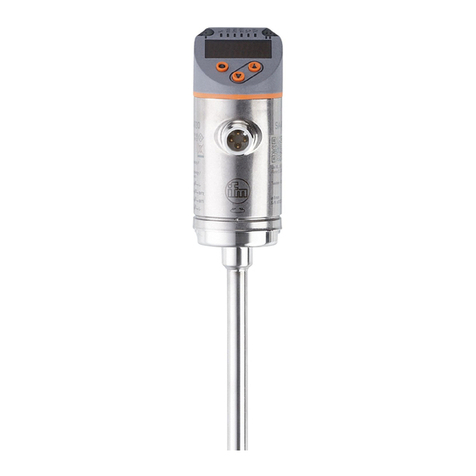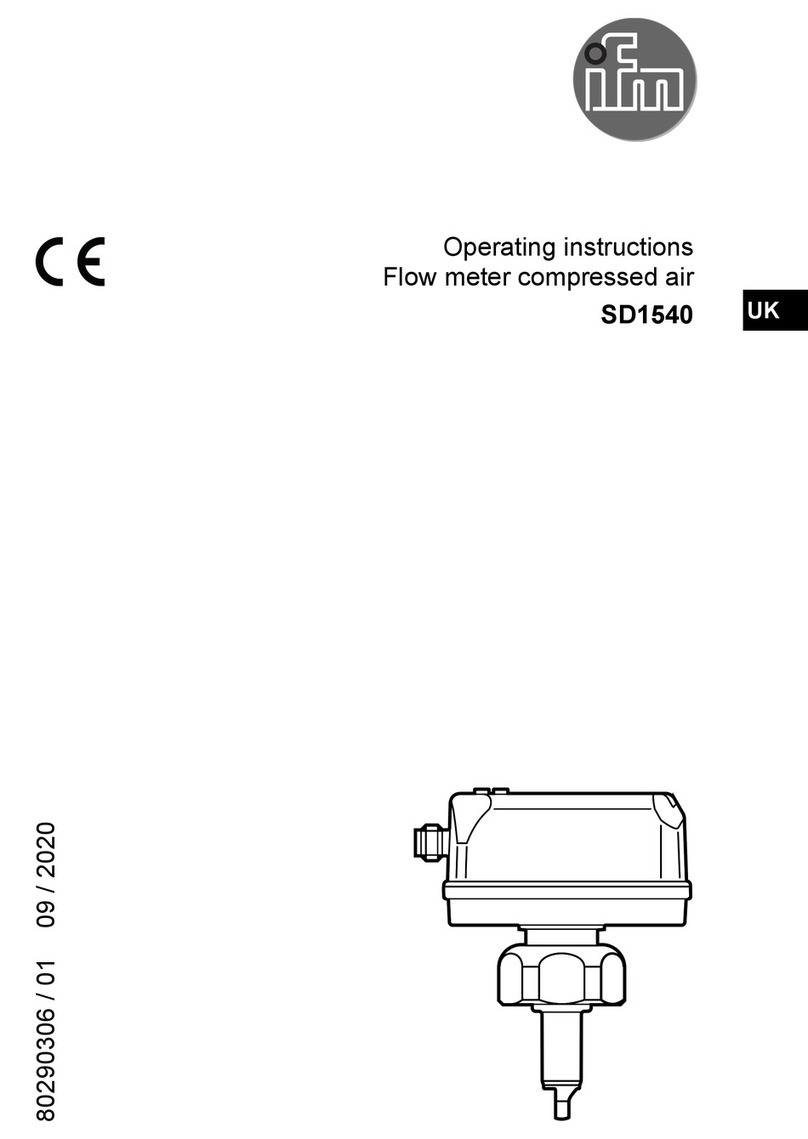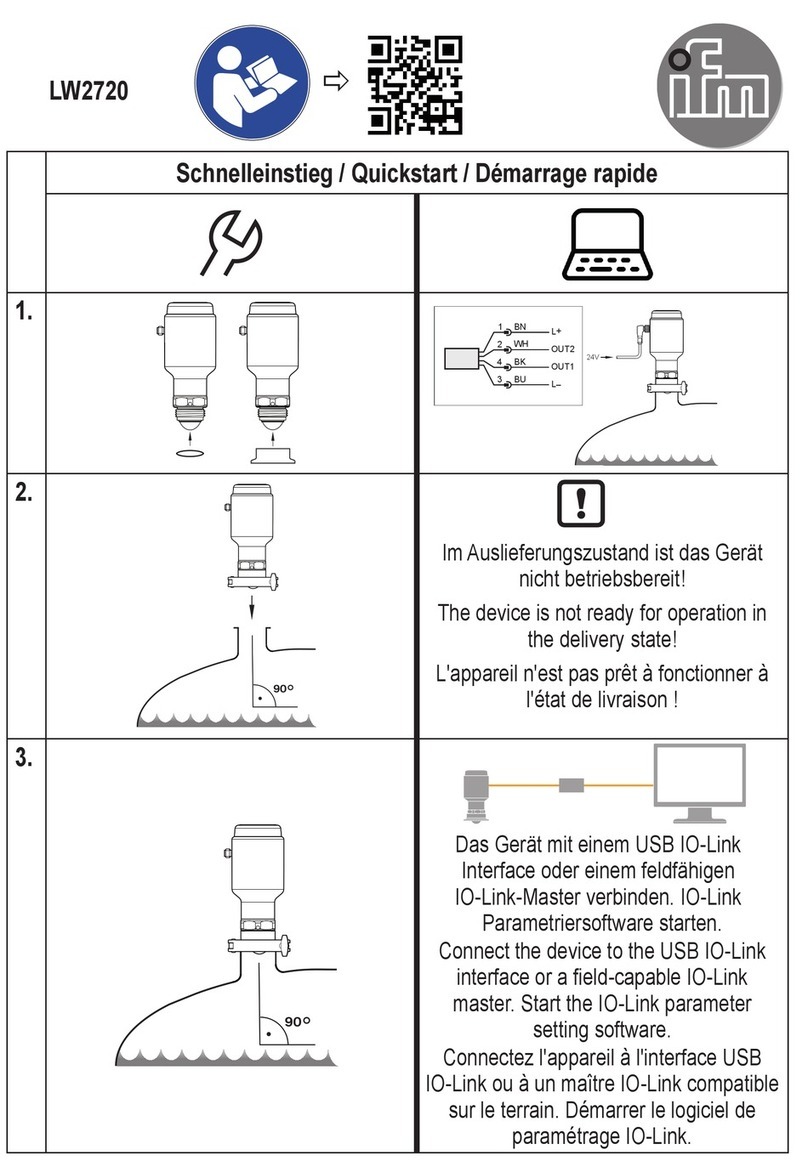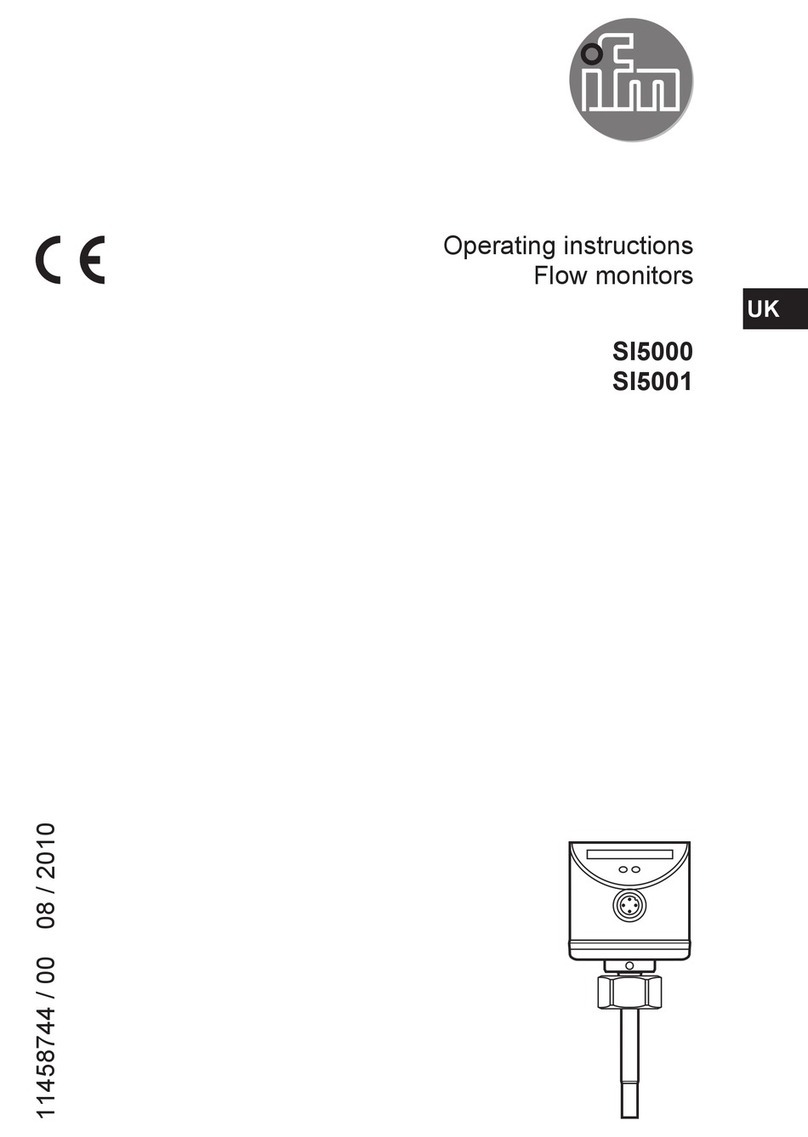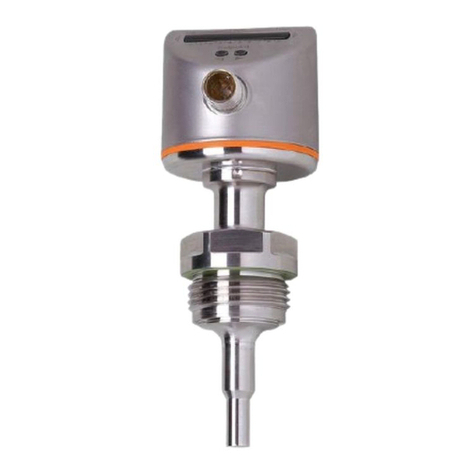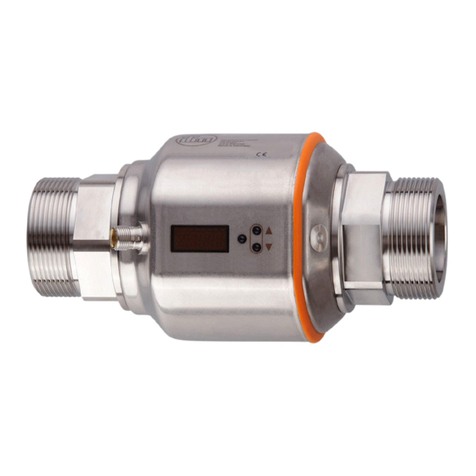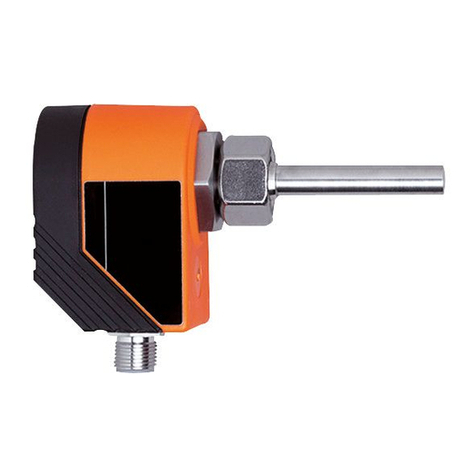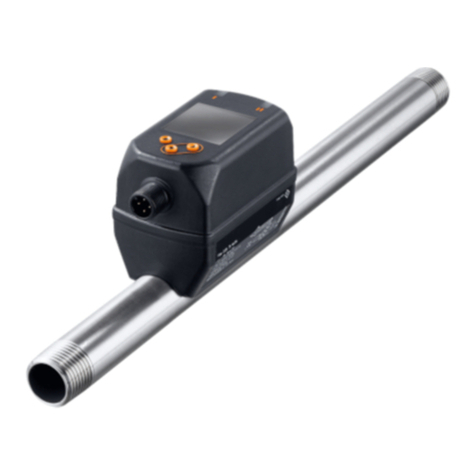
3
UK
10�2 Settings for volumetric flow monitoring������������������������������������������������������28
10�2�1 Limit monitoring volumetric flow (OUT1) ������������������������������������������28
10�2�2 Limit monitoring volumetric flow (OUT2) ������������������������������������������28
10�2�3 Analogue output flow rate (OUT2) ����������������������������������������������������28
10�2�4 Detection of the direction of flow (OUT1 or OUT2)���������������������������28
10�3 Settings for consumed quantity monitoring �����������������������������������������������29
10�3�1 Quantity monitoring by pulse output (OUT1) ������������������������������������29
10�3�2 Quantity monitoring by preset counter (OUT1)���������������������������������29
10�3�3 Pulse value ���������������������������������������������������������������������������������������29
10�3�4 Manual counter reset������������������������������������������������������������������������29
10�3�5 Time-controlled counter reset �����������������������������������������������������������29
10�3�6 Deactivation of the counter reset������������������������������������������������������30
10�3�7 Counter reset using an external signal ���������������������������������������������30
10�4 Settings for temperature monitoring ����������������������������������������������������������30
10�4�1 Limit monitoring temperature (OUT2)�����������������������������������������������30
10�4�2 Analogue output temperature (OUT2) ����������������������������������������������30
10�5 User settings (optional)������������������������������������������������������������������������������30
10�5�1 Standard unit of measurement for volumetric flow ���������������������������30
10�5�2 Standard display�������������������������������������������������������������������������������31
10�5�3 Output logic ��������������������������������������������������������������������������������������31
10�5�4 Start-up delay �����������������������������������������������������������������������������������31
10�5�5 Measured value damping �����������������������������������������������������������������31
10�5�6 Error behaviour of the outputs ����������������������������������������������������������31
10�5�7 Low flow cut-off���������������������������������������������������������������������������������32
10�5�8 Counting method of the totaliser�������������������������������������������������������32
10�5�9 Direction of flow ��������������������������������������������������������������������������������32
10�6 Service functions ���������������������������������������������������������������������������������������32
10�6�1 Read min/max values �����������������������������������������������������������������������32
10�6�2 Restoring the factory settings �����������������������������������������������������������32
11 Operation ���������������������������������������������������������������������������������������������������������33
11�1 Reading the process value ������������������������������������������������������������������������33
11�2 Changing the process value display in the RUN mode������������������������������33
11�3 Reading the set parameters�����������������������������������������������������������������������33
12 Troubleshooting �����������������������������������������������������������������������������������������������34
13 Technical data��������������������������������������������������������������������������������������������������35
14 Factory setting ������������������������������������������������������������������������������������������������36













